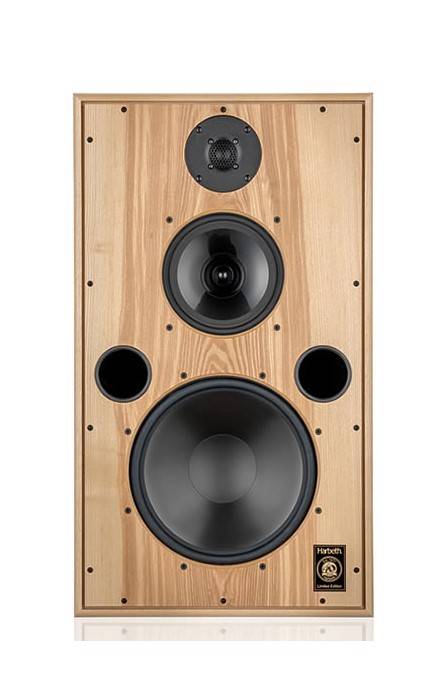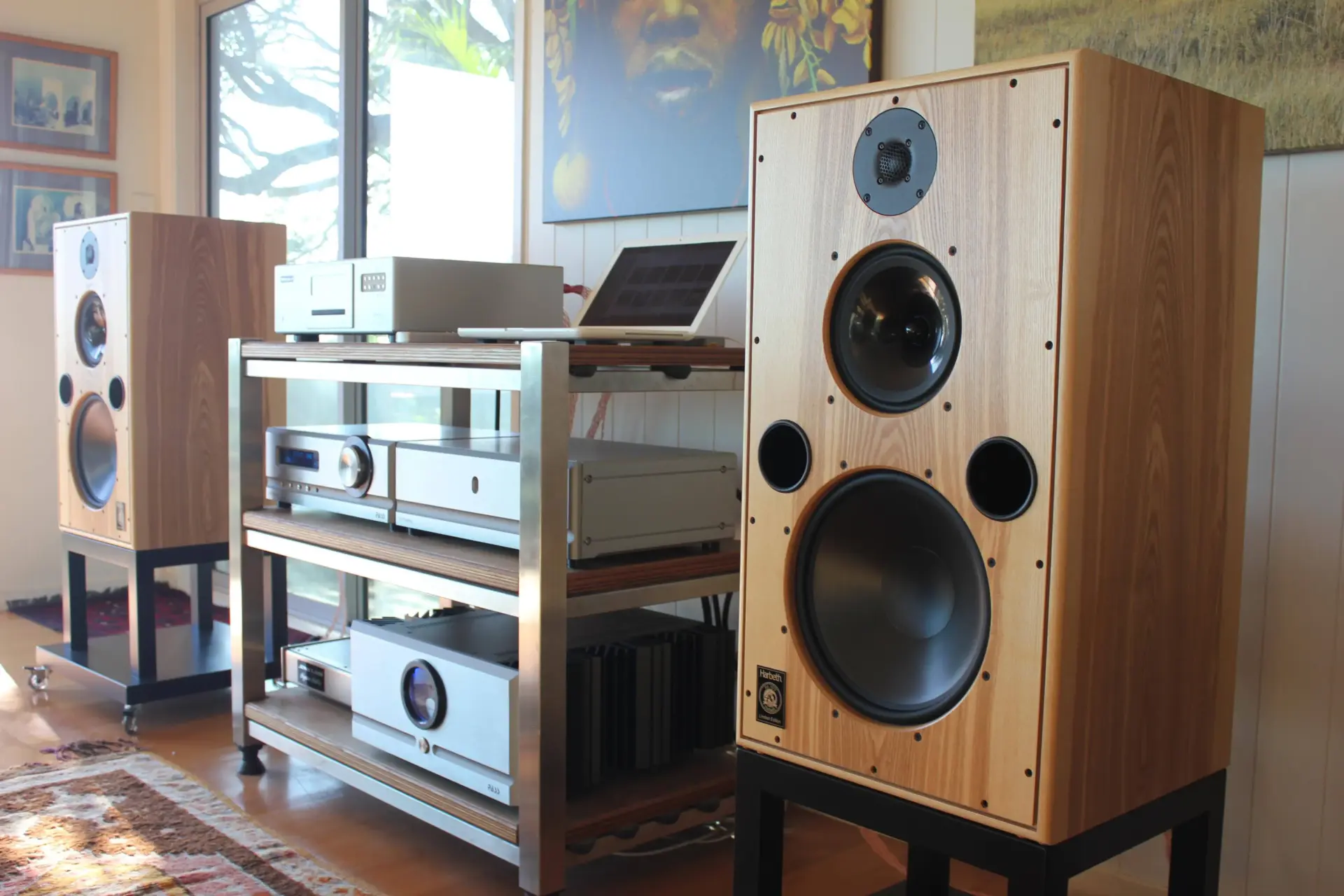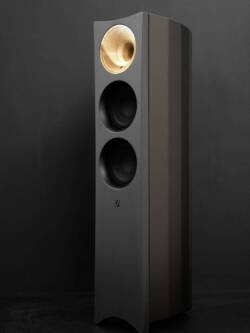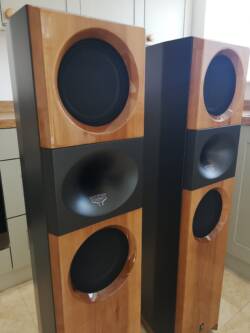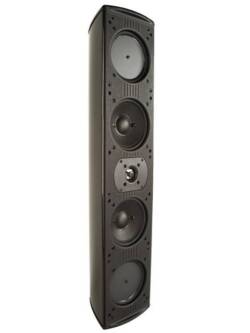Harbeth 40.2 Speakers
Original price was: R242,000.00.R148,000.00Current price is: R148,000.00.
What an AMAZING sounding speakers…absolutely fabulous!!
Harbeth Monitor 40.2 Loudspeaker
REVIEW by Paul Seydor Feb 03rd, 2017
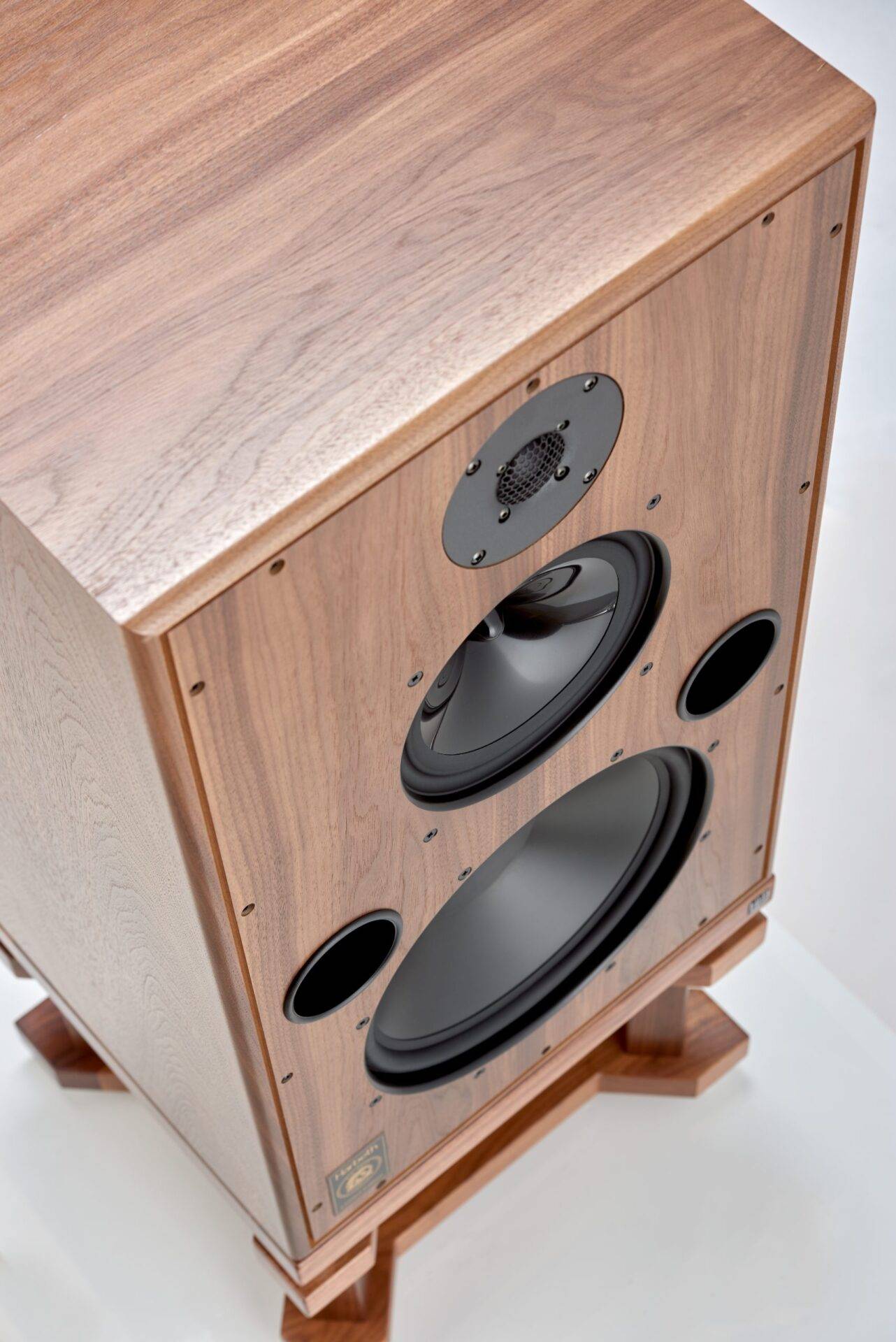
Harbeth Monitor 40.2 Loudspeaker
A few days after I took delivery of the Monitor 40.2, the third version of Harbeth’s flagship loudspeaker, a close friend fell by for a listen. He’s a Los Angeles studio musician (a violinist who’s played many high-profile film scores, often serving as concert master), who is also a long-time audiophile, a member of my informal listening group, and an extremely discerning listener. Within about a minute or two of listening, he asked, “Aren’t you tempted?” He had no idea. I had a sinking feeling from the moment the speakers were delivered—they were already well broken-in—and I started listening that it was going to be extremely difficult to part with them. Several months later I gave into temptation and bought the review pair. This is the sort of admission we reviewers typically reserve for the climax of a highly enthusiastic review, the coup de grace that drives home the full measure of our enthusiasm for those special products we elect to buy for ourselves. But under the circumstances I thought it might be prudent to declare it from the outset, because this is going to be a rave review. In the grand scheme of things, one man’s opinion doesn’t matter much more than the next’s. But if actions really do speak louder than words, then in the strictly personal sense my action is a pretty large statement in view of my history, because for the last quarter-century not only have my reference speakers been Quad ESLs, beginning with the 63, then the 988, and since 2005, the 2805 (in my view still the finest speaker Quad has ever made, though I also have a fully restored vintage pair of original Quads), Quads have also been the only speakers during this time that I’ve purchased for personal use as my main speakers—until now.
In order to keep this piece within a manageable length, I’m going to skip the usual detailed product description and design history because much of this is covered in the accompanying interview with Alan Shaw, the owner of Harbeth and the designer of its products; and for a fuller discussion of his methods, his philosophy, and his roots in the great tradition of loudspeaker research and development pioneered by the British Broadcasting Corporation, I refer you to my review last year of Harbeth’s SuperHL5plus at theabsolutesound.com and to my articles on the BBC Monitor and Harbeth in TAS’s Illustrated History of High-End Audio, Volume 1: Loudspeakers.
The .2 suffix indicates the new model is the third iteration of the original. Physically, it’s a large rectangular box, approximately 30″ x 17″ by 15″, with a 12″ double-ported bass driver that crosses over at 500Hz to an 8″ midrange that in turn crosses over at 2.5kHz to a 1″ soft-dome tweeter (these figures are rounded-off), front-mounted behind a removable grille cloth (that’s intended to be left on), with a single pair of heavy-duty binding posts on the back. The speaker in fact looks rather larger than it actually is mostly because, apart from the beautiful (and perfectly matched) wood veneer, there is no attempt to make it look like anything other than what it is: a large rectangular box whose only purpose is to reproduce sound and music. The traditional look and simplicity belie the sophistication of the design, manufacturing, and engineering, particularly as regards the crossover networks, the almost unprecedentedly low levels of coloration achieved by the RADIAL2 material in the midrange driver, and the way the cabinet, thin-walled but very solid because sturdily braced, has been constructed to control and damp resonances. (I should add that I personally find the speakers to be very attractive, but then I prefer a traditional look, while speakers that resemble globules, are painted like automobiles, or made to look like large industrial structures or objets d’art are rarely to my taste and often strike me as pretentious. I’d rather have an honest box, panel, or tower that knows what it’s supposed to be and does it.)
The 40.2’s remarkably flat impedance curve of 6–8 ohms presents a benign load that makes for excellent results with all good quality or better amplifiers. As it happened, the evaluation period overlapped with the reviews of several amplifiers, the comparing and contrasting of which the Harbeths made child’s play of, sonic differences instantly audible. They can also handle prodigious amounts of power without stress or strain yet will yield eminently satisfying results with amplifiers rated as low as 35 watts per channel.
Stand-mounting is required (17″ high or enough to place the tweeters more or less at ear level), as is placement away from surfaces, while on or near on-axis listening is strongly recommended for accuracy of frequency response and precision of imaging, both of which will be compromised if you aim them straight ahead. Inspired by the BBC, Shaw has spent over three decades researching how to make loudspeakers perform optimally in real-world domestic settings, and all of that knowledge has gone into this speaker. Shaw himself regards the SuperHL5plus as his statement of what a domestic loudspeaker should be, but I think this new Monitor 40.2 is his masterpiece. Although designed as a studio monitor for the BBC—a professional version is available with a utilitarian finish—the sizes of the BBC’s control rooms and studios are more or less equivalent to the vast majority of domestic rooms, so the speaker is as much at home at home as it is in the studio (see the accompanying interview for more on this). Despite full, deep, and powerful bass response, the Monitor 40.2, like other Harbeths, is easier to place for optimal performance in ordinary rooms than almost any other full-range dynamic speakers in my experience. This may be one reason why they excel at trade shows. I’ve heard them several times at Newport, where most exhibitions do not sound particularly good, yet Harbeth’s rooms are always, as I’ve written several times, oases of musical naturalness and relaxation.

Sound
Let’s start with the midrange—that’s where everyone seems to start when it comes to Harbeth speakers. Trouble is, what’s left to be said? How many variations can you ring upon “beautiful,” “luscious,” “ravishing,” “gorgeous,” “drop-dead gorgeous”? Let me approach it a different way. The Monitor 40.2 is flat throughout the entire midrange, from the lower midrange/upper bass all the way through the upper midrange and into the presence region. This translates into an all but peerless tonal neutrality and naturalness that was evident from the moment the speakers were set up and playing.
All Harbeths shine on voices, this one such that you feel you’re hearing voices the way they really sound in reality. One of my toughest acid tests is the Anonymous Four, four female singers who do their best to sound indistinguishable from one another (and whom I’ve heard in concert several times, most recently on their farewell tour a couple of weeks before I took delivery of the Harbeths). This is, of course, impossible, but it does take a speaker of rare resolution to allow you distinguish among them as discerningly as the 40.2 does, literally sailing through the challenge. The same applies to instruments, which are reproduced truthfully in all their range, variety, and individuality of timbre and character. Many years ago James Levine recorded a Strauss program for DG with the Metropolitan Opera Orchestra, an ensemble that for sheer opulence of instrumental color was almost without equal at the time, featuring Death and Transfiguration and Don Quixote. Being multi-miked, the recording doesn’t present the illusion of hearing an orchestra in a concert hall. However, I’ve been reliably informed that a great many musicians are very fond of it because the instruments actually sound like real instruments in timbre and character. I’ve never heard it reproduced with quite the richness and variety that the Monitor 40.2 reveals, not even by my beloved Quads, with that elusive impression of listening back through the chain to the source itself.
Perceived levels of coloration and distortion are astonishingly low on this speaker, easily rivaling those of my Quads. Two examples, both of them vocals: The Alamo soundtrack features two speeches by John Wayne taken directly from the movie’s soundtrack. The recording was made outdoors, so there are no room acoustics as such to deal with, and it seems to have been processed with absolutely minimal control-room processing (I doubt there was any at all—these were pre-Dolby days). It will tell you a great deal about materials colorations, box resonances, and tonal anomalies. For all Wayne’s bravado and physical size, his voice is surprisingly light and pitched rather higher than you might think, despite some gravel from years of drink and tobacco. There should be no false underlining to it, and no bogus nasality apart from a mild vestigial nasality (which never approaches honkiness) in the voice itself.
The other is a fascinating recent reissue of Patricia Barber’s audiophile hit Café Blue, released in its original mix-mastered form before the final mastering. The difference is eye (ear?) popping, and not just, or even principally, because it was mixed in the analog domain using Capitol Records’ fabled analog chambers for ambience and reverb. At first you may be struck by how relatively dead it all sounds by comparison to the versions you’re used to; but soon enough you realize that what you’re hearing is the absence of all the usual kinds of processing that goes into most popular recordings. The resultant purity is instructive, even revelatory, and it doesn’t take much comparative listening before the typical colorations and anomalies in the reproducing chain are exposed. Through the Harbeths I heard nothing that I could attribute to the speaker, and the reproduction was extraordinarily “characterless” apart from the intrinsic character of the performers.
By beginning with the midrange, please do not assume I consider the Monitor 40.2 deficient anywhere else along the frequency spectrum. On the contrary, this is one of the very few loudspeakers in existence that can without crossing your fingers behind your back be called a true full-range monitor of reference caliber. So it is hardly a surprise that the high excellence of the midrange extends all the way up through the top end and all the way down into the bottom-most octave. The transition to the dome tweeter is, to my ears, inaudible, a testament to the fanatical care Shaw has lavished upon the crossover. Long-time readers of mine will know that I find the vast majority of current speakers all along the price spectrum entirely too bright because their response rises in the top two octaves (5k–10kHz and 10k–20kHz). There is no equivalent to this in live music, especially music made by acoustic instruments in the usual venues where music is performed, such as recital and concert halls and opera houses. Next to the bright and vaguely glassy or mechanical-sounding tweeters I’m used to hearing even in very expensive loudspeakers, the miracle of the 40.2’s soft-dome is that it is extended without sounding in the least hyped. If you play a recording that is very bright, like Bernstein’s New York Appalachian Spring on Sony, the 40.2 reproduces it that way, but it doesn’t make it any brighter or more aggressive than it already is.
Another recording that is somewhat brightly lit is Von Karajan’s famous mid-Sixties La Mer with the Berlin Philharmonic. The orchestra plays like gods, but the strings are bright enough that I typically employ a treble cut (let’s hear it once more for tone controls!) to make it sound more natural. On most contemporary speakers the treble cut can be considerable, whereas on the Harbeths it is moderate. But the key point here is that the 40.2 reproduces the brightness but doesn’t accentuate it: The Harbeth won’t make a bad recording sound any better than it is, but, as is not the case with speakers that are not accurate, neither will it exacerbate any of the things that make it bad. This is one reason why so many people who hear this speaker are struck by the beauty of the reproduction.
One thing I’ve observed of past Harbeths I’ve reviewed, which is related to the excellence of their high-frequency response, is how well they reproduce ambience. One of my reference recordings is Sing We Noel, the program of Christmas music by Joel Cohen and the Boston Camerata. There is one cut where there is a speaker in one channel, a singer in the other. When the speaker speaks and the singer sings, they remain firmly situated in their respective spots but the way their voices carry across the spectrum should be continuous and seamless, because you’re hearing the characteristics of the acoustical space of the venue. In the closing piece, as the singers recede, you are clearly aware they are moving out of the microphone field and are more enveloped in the ambience of the venue (it’s also evident they’re moving closer to a reflective surface—the back wall, I suspect).

Interview with Alan Shaw on the Genesis of the Monitor 40.2
Please compare the Monitor 40.2 to earlier iterations.
The main improvement in the Monitor 40.2 is its completely redesigned crossover network. The obvious functions of the crossover are the division of the audio spectrum among the drive units and the level adjustment of the contribution of those drive units. The less obvious function is that the crossover overrides the ear’s sensitivity to sound coming from more than one source. In nature, the sounds we hear emanate from point sources that give them directionality. For me, seventy-five percent or so of the total design for any new Harbeth model is precisely this issue of making a convincing junction between the sonic contributions of the drive units in order to simulate a point source. Also, the work in developing the SuperHL5plus opened up techniques that I could weave into the Monitor 40.2. It’s often about small, incremental steps that can cross-fertilize from one model to another if they’re appropriate.
One difference I immediately heard between the new model and the original is the slightly deeper bass extension of the 40.2 but slightly less overall bass around, say, 100Hz, the so-called warmth region.
The Monitor 40 was originally conceived as a drop-in replacement for the Rogers LS 5/8, a speaker in wide use in the late nineties in the BBC and elsewhere in British broadcasting. It was quite a shock to procure a pair from a disbanded studio and measure and listen to them under domestic conditions, which they were never designed to be used in. The entire frequency response had been tuned to the highly absorptive acoustic environment of “old school” studios of the era. Nobody could foresee how the architectural minimalist trends would become so popular among consumers, and even among studio designers. Since the Monitor 40 project now covers over fifteen years, the bass has been progressively optimized, that is, made drier, for those less damped acoustics. So the 40.2 is better balanced for the majority of modern rooms.
I’ve always found your speakers to be notably coherent, yet so far as I am able to tell, you don’t employ special methods to achieve this, such as physically staggering the drivers so their voice coils line up, etc. Can you comment on this?
Coherency is primarily a crossover issue. Conceptually the difficulty lies in the way the ear/brain interprets the junction between the two or more sound sources. It doesn’t take much of a mismatch in level or phase for the subconscious to needle the brain with awareness that there is something wrong. I was lucky to be sensitive to this matter as a rookie designer some thirty years ago. By trial and error I developed an approach to getting the best out of the drive units, an approach I’ve basically replicated in all subsequent Harbeth designs. I’m sure other loudspeaker designers have their own lexicon of tricks.
Both the coloration and integrality of Harbeth speakers is really low, yet your drivers are not made from the same materials.
Coloration takes many forms. I recall asking my predecessor, Dudley Harwood, from whom I purchased Harbeth, as he handed the keys of the company to me, for a definition of coloration. Taciturn at best, he replied, and I quote, “You will know it when you hear it.” When I started designing, coloration seemed so extremely obvious, to my ears anyway, that even though I didn’t technically understand where it came from, I kept designing until I had eliminated it. Loudspeaker drive units are energized by the music, which causes their diaphragms to be shocked into motion. These shockwaves substantially radiate through the diaphragm and generate sound waves in the room. Unfortunately, a proportion, a very small proportion, bounces around inside the diaphragm itself and interferes with successive musical events. You can imagine that within the first thousandths of a second after the music starts that a background of residual energy will have built up in the diaphragm and will be topped up by successive notes. It’s this sonic mush that at best fogs the overall sound and at worst introduces audible coloration, where some notes are dominant. The pioneering research that we, in collaboration with government funding, conducted in the 1990s proved beyond doubt that all commercially available materials, including all the popular ones, used in loudspeaker manufacturing are really unsuitable for the task. Their molecular structures, particularly the inter-chain bonds, have characteristics that nip energy from the music they’re attempting to reproduce, particularly in the presence and lower treble region. The low coloration that you hear in the Harbeth loudspeakers, especially in that critical musical band, is a direct result of us conceiving, proving, and blending different materials for their acoustic properties.
Do you still employ recordings of your daughter’s voice to do a final voicing of the speaker?
My daughter is now in her early thirties and has quite a different voice to the nine-year-old that I recorded all those years ago. Good news, though—my granddaughter is nearly four years old and I am grooming her for a life in loudspeakers! Seriously, the ear/brain is highly optimized for detecting subtle nuances in human speech. If we guess that our ears have been under development for some millions of years, we know that the first musical instrument appeared around fifty thousand years ago. This is far too recent to have had any physiological impact on the development of the human ear. It follows then that to use our ear as an analytical instrument when grading loudspeakers, it’s the reproduction of voice that can tell us a lot about the mechanics of the loudspeaker. Note that the human vocal tract is a soft tissue structure with plenty of “damping” thanks to being nourished by warm blood and elastic tissue. All of the undesirable characteristics of loudspeakers that are commonly mentioned such as spitty, ringing, wiry, harsh, biting, gritty, bright, brittle, and so on are likely to be the consequence of hard materials in undamped resonance. No wonder then that convincing natural sound is so elusive in home hi-fi.
I have always been curious about this whole matter of voicing. How do you “voice” a speaker system without the use of, say, an equalizer, whether analog or digital?
“Voicing”—I don’t like this word and don’t use it. All it means in a fancy way is of setting the contribution of the drive units so that they are blended adequately to fool the listener’s ear into thinking that he is actually in front of the performers, live. Present one hundred loudspeaker designers with a cabinet fitted with drive units and a box of crossover components and you will end up with one hundred different voicings. Which one is correct? That’s a tough question because those one hundred designers will have two hundred different ears. They also evaluate sound differently, different instruments will appeal to them or not, they’ll be sensitive to different colorations and some may see themselves as wizards with the power and right to “interpret” the recordings. Some may use test and measurement equipment that will guide them towards a relatively neutral contribution of the loudspeaker, others may voice entirely by ear. Whatever the strategy, expect a wide variation in sonic performance. If, however, a degree of objectivity is introduced, those speakers could be graded. One attack would be to record a human voice under non-reverberant conditions and to switch between that human sitting next to the loudspeaker and his or her voice reproduced over the loudspeaker. My experience is that ninety percent of the candidate loudspeakers would be dismissed as having characteristics not at all present in the live voice. It’s a great pity that the word “voicing” is rarely associated with the concept of listening to a human voice over the loudspeaker!
Also, how do you control the dispersion of the response?
In reality there is not much that can be done to control the dispersion of loudspeaker drive units unless they are fitted with horns or similar diffusers. The BBC’s view was that it’s the on-axis response that’s paramount. This has merit, providing the listening environment can absorb the off-axis sound that is splashed onto the sidewalls. In the domestic environment often the sidewalls are untreated, even though there may be snug carpet on the floor. We’re back to the issue of careful selection of crossover frequency and contouring the fade-out and fade-in of drive units so that off axis, where they are becoming beamy due to their diameter relative to the frequencies they are reproducing, the transition is smooth.
You still use a relatively thin-walled enclosure with lots of bracing for support and stability, but no heroic measures, so far as I can tell, to dampen resonances as such with the use of synthetic materials or super-rigid construction.
Cabinets: We do indeed live in a world where visual impressions seem to count for so much. The physics of panels—those forming a loudspeaker cabinet—say very clearly that thickness and stiffness do not guarantee low sonic contribution. Indeed, rigid panels can move the latent resonances away from the bass region and up into the midrange where they are energized by the music and can sound extremely objectionable. After extensive research the BBC concluded that a relatively thin-walled but sturdily braced cabinet could be steered by the application of damping into a state of relative inertness, in a way that no thick panels could be. This gives the thin-walled cabinet designer a whole armory of tricks for better sound.
One of the arguments you make in Harbeth literature is that exotic parts and wire are not necessary for state-of-the-art performance, merely parts and wire of requisite specification that will be reliable under dynamic conditions and for a very long time. I’m sure you know that many, perhaps most, Harbeth users ignore this when it comes to selection of speaker cable (and interconnects).
During my teenage years, music was my escape, and my interest in radio and broadcasting led to an involvement with the local BBC radio station. It was then that I was introduced to the BBC monitor. What impressed me was the pragmatism of the BBC designs, a total focus on simplicity, cost-effectiveness, and real, solid, honest engineering. I’m well aware that consumers can select whatever they like, but I worry when the hardware becomes more important than the music and seems to trap consumers in a cycle of dissatisfaction. Having said that, I’m acutely aware that it’s the ongoing sale of accessories to consumers, who rarely change their core system components, that helps keeps the audio dealer in business. I’d just make a plea for common sense. If the consumer has the interest and the cash to invest in exotic audio accessories, do so. But do so without feeling compelled to apply what may be pseudo-science.
The 40.2 is among the first Harbeths to use drivers made from Radial2, a new formulation of your proprietary RADIAL material. What’s been changed?
A small few-percent adjustment of the ratio of the key elements in the diaphragm polymeric compound.
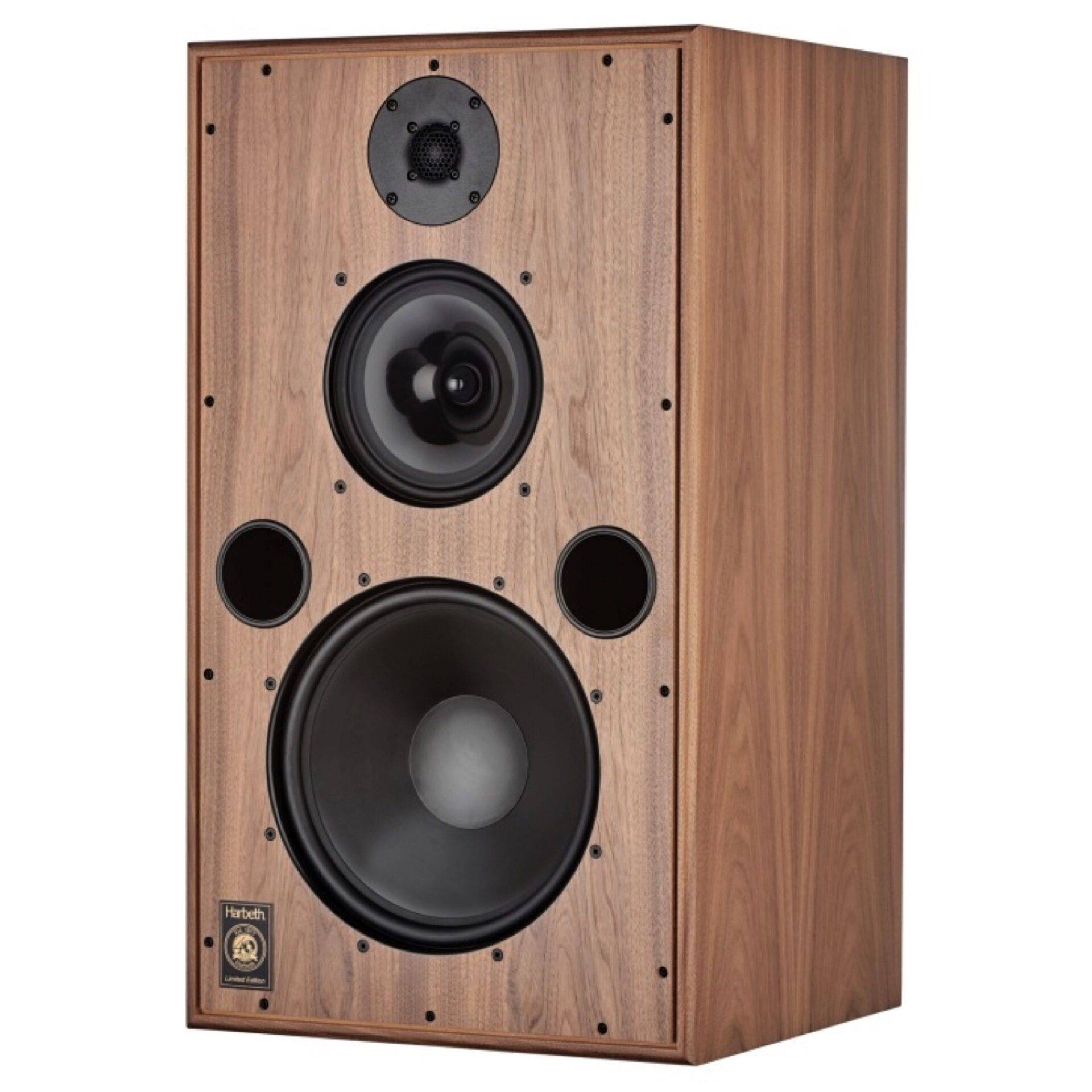
What do you say to those audiophiles who ask, “Well, if you had no constraints as regards price or size, what would an all-out, no-holds-barred Alan Shaw speaker look and sound like?”
Looking back I can see how fortuitous it was that the BBC control rooms are approximately the same size as a typical British living room. Had the BBC control room been three or four times the size of the home listening room, the magic simply wouldn’t have been translatable. But your question is about my so-called “Magnum Opus.” Assuming I had the time to develop a speaker for myself, with no need to be concerned about commercialization, what would it look like? Actually, now that I have dictated that sentence I can’t actually answer my own question. What I do know is that the speaker would unquestionably sound like a Harbeth of today, but I can’t decide what to sketch on that blank sheet of paper when it comes to its physical configuration. Perhaps things will become much clearer after a couple of pints—they usually do!
And so we come to the bottom end. The original Monitor 40, which remains one of Robert Greene’s reference speakers, employed a twelve-inch driver that Harbeth outsourced. Without warning, the manufacturer informed Shaw the driver would no longer be available, hence the reason for the 40.1 modification. Along the way, Shaw changed some of his ideas about bass behavior in small rooms—by small rooms, I mean even large listening and living rooms, since referenced to concert halls, opera houses, stadiums, etc., all domestic rooms, even pretty large ones, are considered small, and small-room acoustics present a very different set of problems, notably in the bass. The original Monitor 40 exhibited a quite appealing sense of bloom and warmth throughout the bass region. But because its bass response was so expansive, even robust, it could prove difficult to place in some rooms. In the 40.2 Shaw judiciously reduced some of the mid- and upper-bass response while extending the low-end a bit more, the -3dB point now 35Hz, which means that with boundary reinforcement the -3dB point will approach 30Hz in most rooms. Yet the speaker retains the warmth and overall musical balance of the original, nary a trace of that thinness in the warmth region—what friend of mine likes to call the “baritone” range—of so many current speakers that bill themselves as full-range. In other words, Sinatra, Fischer-Dieskau, and Belafonte sound like the baritones they are, not optimistic tenors.
This in turn translates into an ideal mediation among warmth, definition, extension, and power. These last few years I’ve taken a keen interest in the great conductor Leopold Stokowski, who favored a symphonic sound picture weighted toward the cellos and doublebasses. It’s fabulously rich and voluptuous, sumptuously on display in his famous recording of The Moldau and Liszt and Enescu rhapsodies, not to mention his several symphonic syntheses of music from Tristan und Isolde and the Ring, which the Monitor 40.2s reproduce in all their storied glory. Indeed, there’s not another speaker I’d rather listen to orchestral music on than the Monitor 40.2, so true is it to spectral balance to the real thing.
Is a subwoofer necessary? I would say that in any practical sense, no, at least for most kinds of music. Even the 32Hz organ pedal point at the beginning of Also Sprach Zarathustra is reproduced with as full a volume as the recording will allow (assuming the note is really on the recording). But that isn’t to say it won’t benefit from a subwoofer. Subwoofers, like equalization, are most successfully used when a speaker already has excellent bass response, and all you’re after is the reinforcement necessary to give a greater sense of weight and ultimate extension with organ recitals or augmented orchestras in music like the Berlioz and Verdi requiems or Mahler symphonies (or maybe you just want to hear the subways running under the cathedral in the St. John’s Choir’s Christmas recordings?). A good subwoofer that reaches into the bottom octave, especially the bottom half-octave, can also often capture a sense of the spaciousness of these venues in a way nothing else can quite manage. The 40.2 is an ideal candidate for subwoofer reinforcement precisely because its bass response is already so excellent. But be sure you get a subwoofer that goes really deep and that allows you to set its crossover really low, at least as low as 40Hz. Otherwise you’ll just mess up the 40.2’s superb bass response. (Harbeths are especially well matched to REL subwoofers because RELs are designed to be less subwoofers as such than true sub-bass systems. For more on this, see my review of the REL Series R528SE at theabsolutesound.com.)
So far I’ve emphasized the 40.2’s essentially flat frequency response, tonal neutrality, and natural tonal balance. But it is outstanding in several other ways as well. For one thing, it’s extremely transparent, rivaling without surpassing my Quads. Its resolving capability is equaled by few speakers in my experience and surpassed by none. Its resolution is as high as the most detail-oriented speakers I’ve heard, but it will keep detail in its proper perspective and it is never merely analytical: To give an exhausted metaphor a little more work, it’s not a missing-the-forest-for-the-trees presentation, rather a forest-and-the-trees presentation. Its imaging capabilities are essentially determined by the source or the source component, its perceived distortion is extremely low, and it is vanishingly low in coloration. It is also astoundingly clean and clear, obvious testimony to Shaw’s masterly implementation of the BBC’s philosophy of thin-walled panels, sturdy bracing and damping, and also the RADIAL compound he’s developed for his midrange drivers. There is, moreover, a coherence, a tonal integrity, and the ability to speak as if of one voice that is unsurpassed in multiple-driver loudspeakers of my experience, while its dynamic range and loudness capabilities exceed anything you are likely to be able to stand in any appropriately sized room the speaker will be used in. As important, if not more so, is its ability to play at near-whisper levels without the tonal dropout typical of so many dynamic speakers when played at very low levels—getting close to my Quads in this respect (though nothing surpasses Quads for ultra low-level listening).
Owing to its neutrality and tonal balance and because my musical tastes lean that way, I’ve been talking mostly about the Monitor 40.2’s performance with acoustical music. But while rock ‘n’ roll doesn’t occupy a large part of my listening, the rock I like I really like a lot, and the 40.2 renders it sensationally. I’ve never heard Graceland more excitingly or engagingly reproduced, with more clarified textures and dynamic range, power, and legitimate punch, the same for any number of Rolling Stones recordings. Philip O’Hanlon of On a Higher Note recently gave me a DSD file of “American Pie,” my nomination for maybe the greatest rock ‘n’ roll song ever written (it’s surely one of the few that transcends the genre), which over the Harbeths is stunning in its vitality and emotional affect. I’ve always found it a bit ironic that so many rock fans tend to like speakers that are thin in the warmth region and pitched up top because they like the way that makes the music sound punchier and aggressive. In fact, many rock musicians, notably those of my generation, have been rather vocal in expressing their preference for a lot of energy in the warmth region, as it happens precisely where symphony orchestras also have a lot of their energy. This is one reason so many rockers gravitated toward McIntosh tube amplifiers. I predict that for these musicians, the 40.2 will prove something of a revelation. (If you need further proof, try some Buddy Holly.)
In the sum, the Monitor 40.2 possesses that difficult to define but instantly apparent impression of authority on any and all kinds of music. From the simplest to the most demanding, from a whisper to far louder than you can stand, you have the sense there is no kind of music that it cannot take in easy stride and reproduce as truthfully, beautifully, and faithfully to the source as the current state of the art will allow.
Incidentally, thanks is extended to Pass Labs for lending their XP-10 preamplifier and X150.8 power amplifier so that I could have a representative example of a really high-powered amplifier for the 40.2. I should add that the combination was absolutely superlative, with genuinely effortless performance even with very demanding sources.
Limitations
The Monitor 40.2 is not perfect, but in any practical sense it has no limitations that matter to me as a music lover and audio consumer. This is consistent with Shaw’s design brief for this and all his speakers, which is to say that each model is designed for specific applications to reproduce music and sound as accurately as possible in rooms, whether in studios or in homes, that fall under the broad category of normal-sized. They’re not intended for sound reinforcement or for use in extremely large rooms of the kind that you might find in baronial estates or castles. Otherwise, its ability to play loudly and cleanly exceeds any reasonable standards in any application or venue for or in which it is designed or likely to be used. If you need more loudness than that, then you must look elsewhere (though I’d be seriously concerned about hearing damage).
As with all true full-range speakers, you must be sure your room can accommodate the bass pressures they can generate. If your room is not large enough to allow you to keep a pair of 40.2s reasonably well away from the front- and side-walls and you still want the Harbeth sound, then the superb SuperHL5plus or Monitor 30.1 would be more sensible choices. My listening room is a little over 2500 cubic feet (8″ x 15″ x 21″); Robert Greene’s is close to that, but differently dimensioned. Mine are about seven feet from the front wall, Robert’s about five feet (I’d estimate) but only about two feet from either side-wall and aimed at the listening position in each room. The Harbeths perform superbly in both settings. (I’ve never heard better reproduction, and only very rarely as good, of symphony orchestras on any system anywhere than in REG’s dedicated room when he’s got his Harbeths really dialed in.)
If you are a fan of the best planar loudspeakers, such as Quad ESLs or the Sanders Model 10e, as I surely am, the 40.2 will not match their ultimate openness and freedom from boxiness, but it is not far behind, and its performance in these areas is nevertheless superb by any other standard. To my ears the Sanders 10e is even more tonally neutral than the 40.2, but the latter possesses an elusive quality of richness, timbral naturalness, and vitality that I have not experienced even with my beloved Quads.
Although the 40.2 is capable of reproducing a really big sound, what it will not do, if this is important to you, is reproduce the height of performers in your living room the way taller speakers like the Sanders, MartinLogans, Magnepans, Wilsons, etc. do. Mind you, the Harbeths are very good in this regard and with some instruments—like a string quartet, for example, or a piano—they can suggest life-size scale and dimensionality. But if you must have the impression of a six-foot singer standing six feet tall in your room, the 40.2 will come close but it will not get you there, although, like me, you may be so seduced by its reproduction of voice that you’ll never miss the height factor.
Conclusion
Inasmuch as I gave away the punch line at the outset, let me finish by saying that if I were asked to recommend a loudspeaker to someone who loves a really wide variety of music and wants it reproduced accurately, naturally, and beautifully such that he or she truly can listen for hours without fatigue, my recommendation in the here and now would unhesitatingly be the Monitor 40.2. As the review period has lasted several months, during which time I’ve had to evaluate several other components, I’ve also come to appreciate the Harbeth’s value as a tool for reviewing equipment and recordings. This is one speaker that really will tell you the truth about any source or any components feeding it.
As for my 2805s, no, I’m not about to sell them—once a Quad man, always a Quad man—but they must henceforth share house space with the Monitor 40.2 as my idea of how a reference loudspeaker should sound and perform. Now that the evaluations have ended and the review finished, truth in reporting requires I point out I’ve felt no pressing urge to bring the Quads back into the listening room, so satisfying are the Harbeths. The Monitor 40.2 is now my reference loudspeaker, and so it shall remain for a long, long time to come: I choose the speakers I buy for my personal use very carefully and I do not change them capriciously.
Description
Type: Dynamic three-way vented
Drivers: 11.81″ Harbeth bass unit; 7.87″ RADIAL2 mid; 0.98″ ferro-cooled soft dome tweeter
Frequency response: 35Hz–20kHz ±3dB free-space, grille on
Impedance: 6–8 ohms, easy to drive
Sensitivity: 86dB/1W/1m
Amplifier suggestion: 35Wpc minimum
Power handling: 650W program
Dimensions: 17″ x 29.5″ x 15.27″
Finish: Cherry, eucalyptus, rosewood, tiger ebony
Stands: Approx. 17″, sufficient to bring tweeter to ear level
Weight: 83 lbs. each
Price: $14,999 (cherry)
